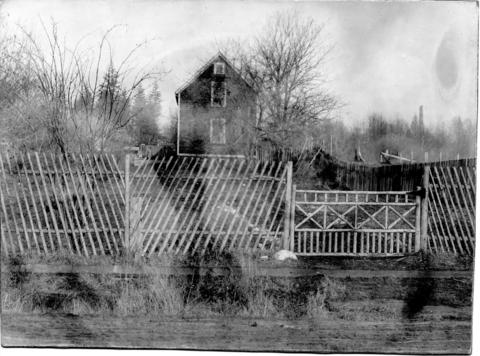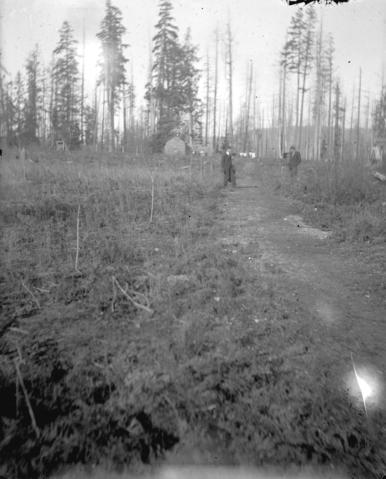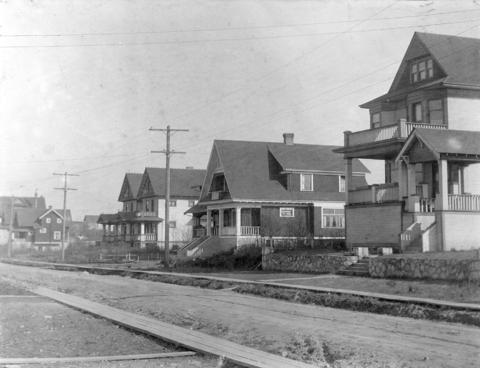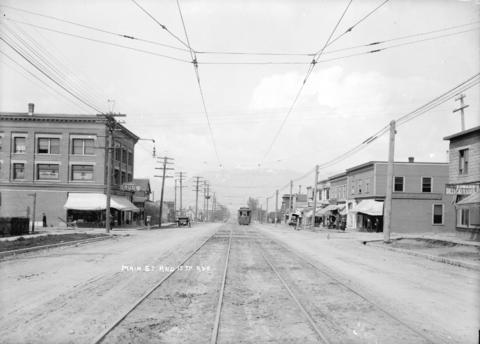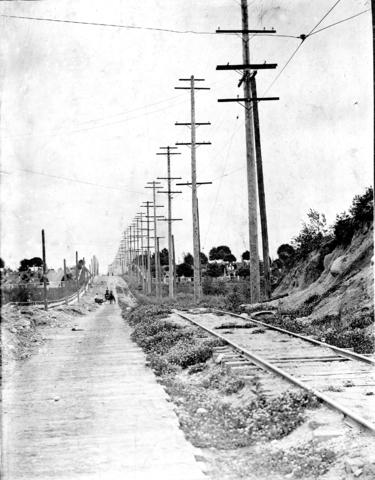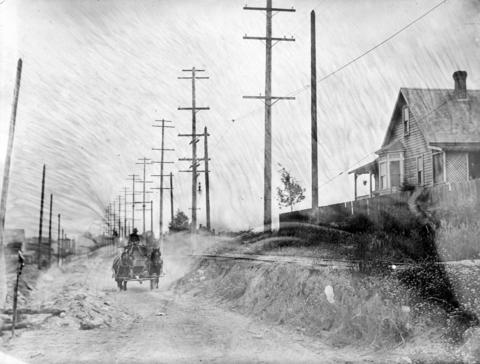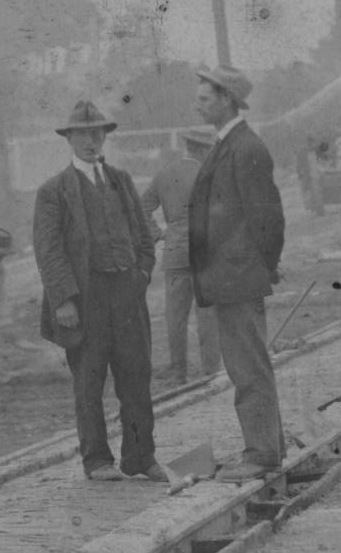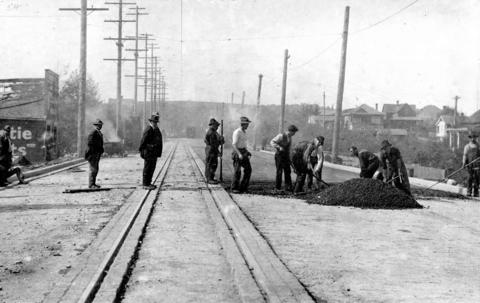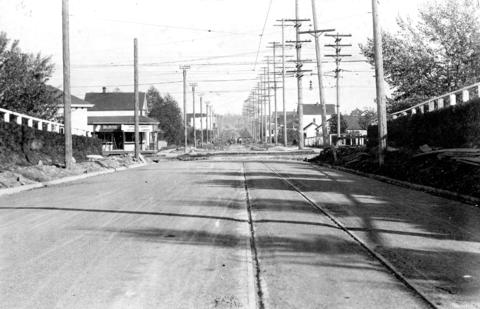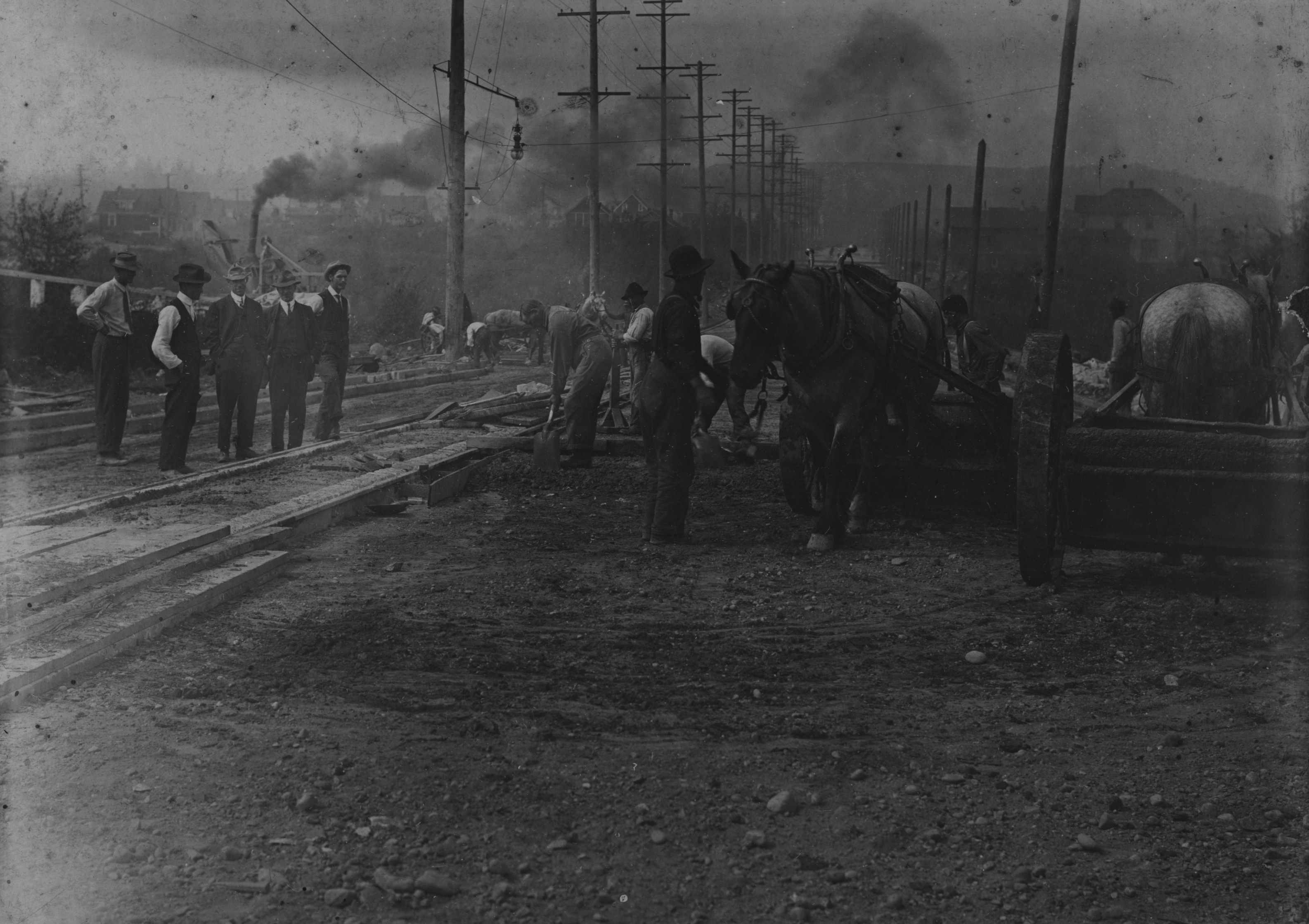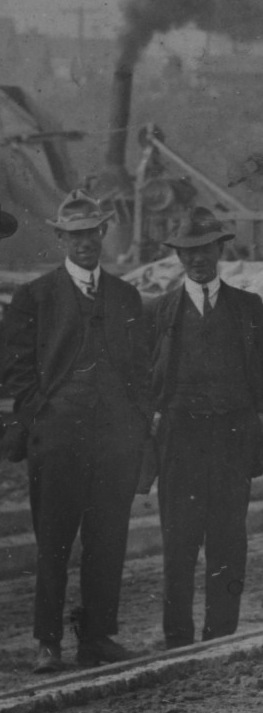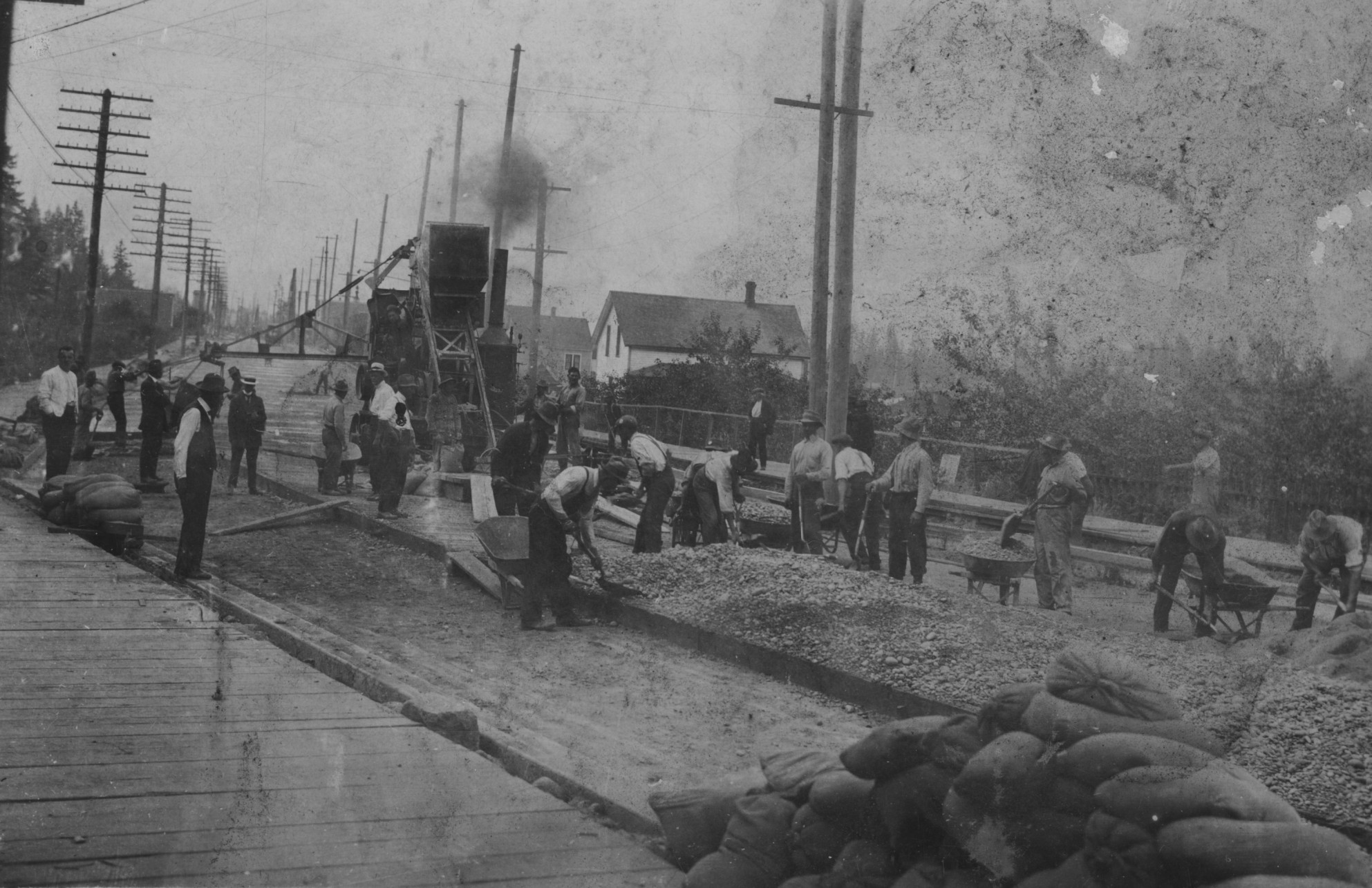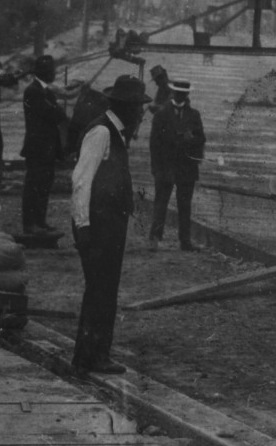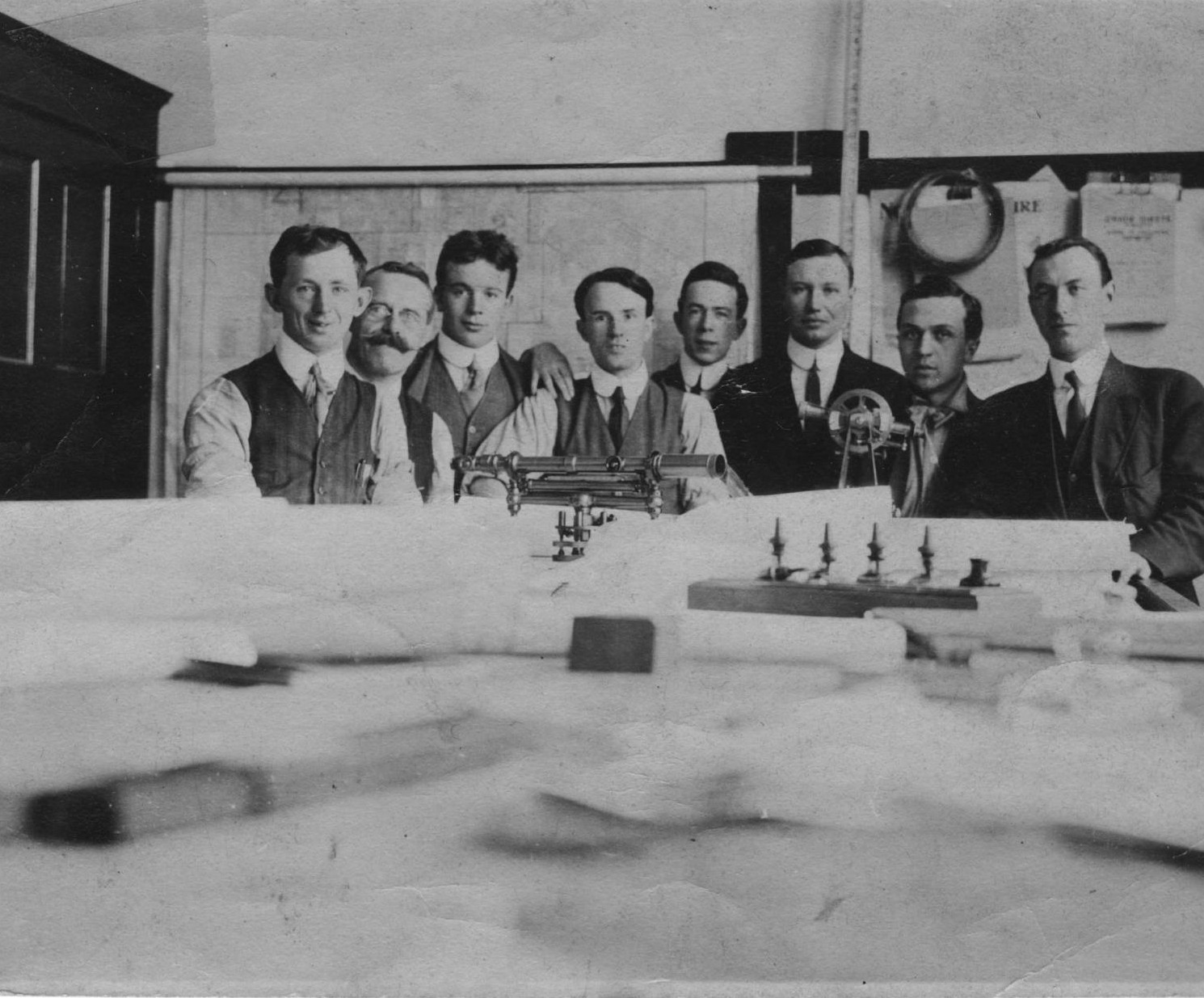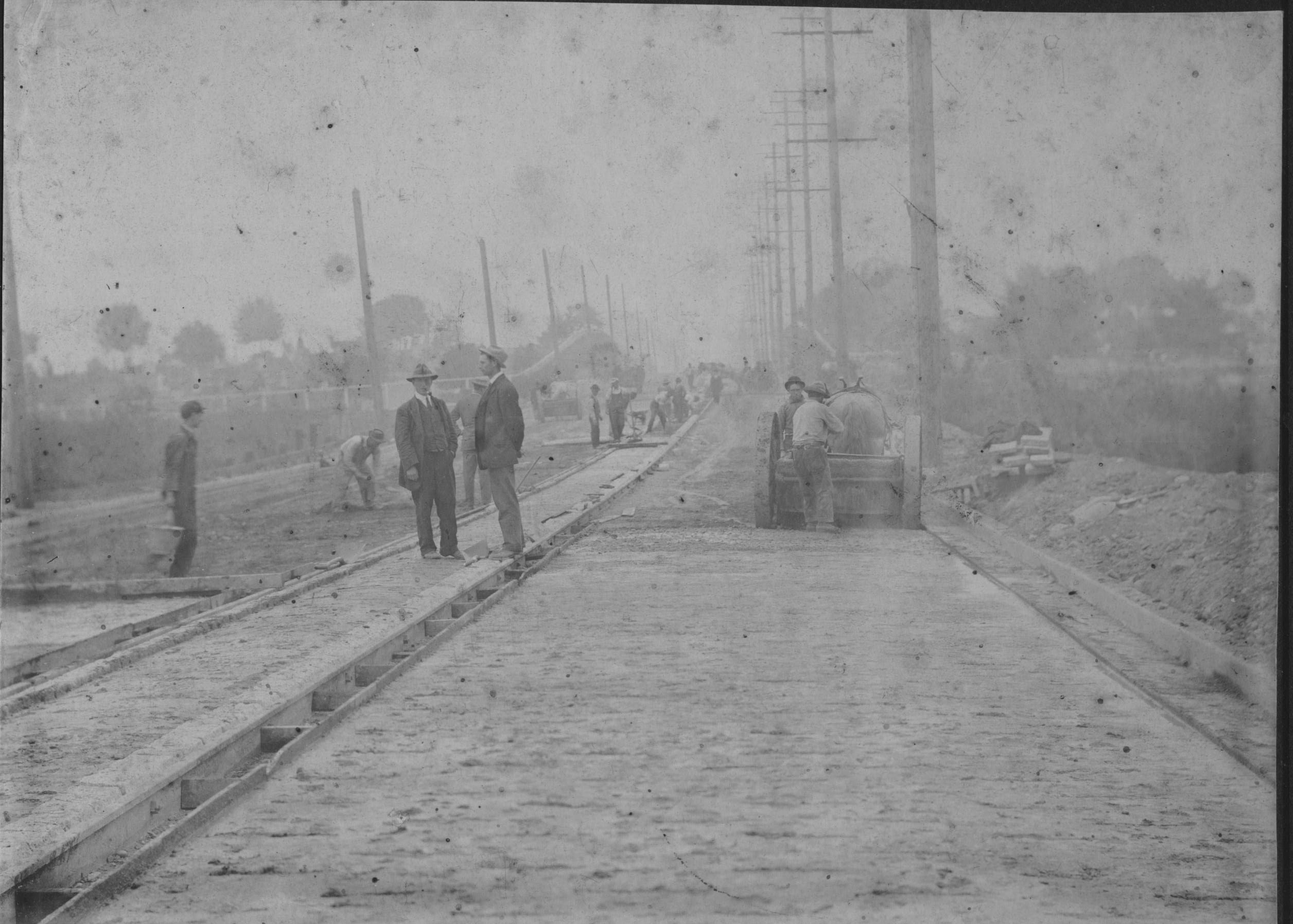
Two men supervising the construction work along 33rd Avenue in the District of South Vancouver, circa 1912-15
We have a letter dated July 10, 1915 from Mr. S. B. Bennett, the Municipal Engineer for the Corporation of the District of South Vancouver, that provides Harry Wighton with a work reference. This letter gives us a pretty clear picture of the work that Harry had been doing for the district. I'll be quoting that letter at length below. The family also has 6 framed photographs that show various stages of road construction. These same pictures, and many more, can be found in the Vancouver Archives as part of the collection of a Major Matthews. Major James Skitt Matthews was the City of Vancouver's first archivist and an early historian and chronicler of the city. He kept personal track of activities and events of the time. As his own collection grew, it was natural for him to start collecting general historical material from others in Vancouver. In the end, he amassed more than 500,000 photographs and hundreds of civic records and personal papers. We might presume quite safely that Major Matthews took these road construction pictures (or had them taken) and then gave a copy to Harry for his personal use. I will be incorporating other pictures that Matthews took in addition to our own because it's interesting to see not only Harry's contributions to early Vancouver, but also to learn more of what Vancouver was like at that time.
First, let me explain about "The Corporation of the District of South Vancouver." The District/Municipality of South Vancouver was established on April 13, 1892, and at that time was comprised of all the land south of 16th Avenue and down to the Fraser River from Boundary Road west to the ocean. In 1908, a large portion of South Vancouver's land was hived off to become the Municipality of Point Grey. At the time of Harry's employment therefore, South Vancouver consisted of the area south of 16th Avenue down to the Fraser River, and from Boundary Road west to Cambie. The municipality consisted of 14.5 square miles with 4.5 miles of Fraser River waterfront. In 1911, when Harry started work, there were 120 miles of graded streets, 38 miles of macadamized (paved) streets, 110 miles of watermains, and 105 miles of sidewalks. All of this for a population of under 5,000 people of which 2,500 were children in schools.
As to the topography of the district, the highest altitude was 601 feet, with the land sloping gently towards the river. At one point, this land had been heavily forested with huge trees. However, the area had been extensively logged and what remained was light second growth, or scrub brush. Large portions of the area would have been sparsely populated with the land to the north gradually taking shape as housing developments. In 1929, South Vancouver, Point Grey, and Vancouver were amalgamated into what we now know as Vancouver. Below are two pictures of the more remote areas of South Vancouver. The next two pictures show more developed areas - a residential unpaved street with wooden sidewalks and a picture of Main Street at 17th, looking north. Note the electric tram lines on the graded but unpaved road.
